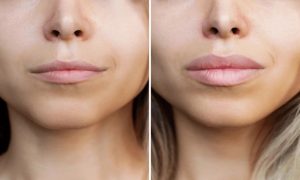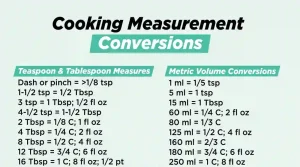Alright, let’s be honest. Measuring stuff in the kitchen can get confusing real quick. One recipe says teaspoons, another flips it over to tablespoons, and I end up standing there like a deer in headlights. I mean, why can’t we just agree on one system? But nope. We’ve got to deal with conversions. So here I am, breaking down teaspoons to tablespoons in the most un-fancy, human way possible.
I still remember the first time I tried baking cookies with my grandma. She yelled across the kitchen, “Two tablespoons of sugar!” and I panicked because the only clean spoon I could find was the tiny one I used for stirring tea. That’s when I learned the golden rule:
3 teaspoons = 1 tablespoon.
Simple. Easy. Burned into my brain ever since.
But let’s dig a little deeper, because “simple” never stays simple when you’re mid-recipe and your brain decides to forget math.
Why Conversions Even Matter
If you’re the type to eyeball everything like some mad scientist, hey, more power to you. But I learned (the hard way) that some stuff doesn’t forgive sloppy measurements. Try dumping too much baking powder into pancake batter and you’ll end up with something that looks like it’s trying to escape the pan.
Baking is strict, cooking is chill
- Baking: Think chemistry. Exact amounts or everything collapses.
- Cooking: A little extra spice? Who cares. Half a clove of garlic more? Even better.
So when it comes to teaspoons to tablespoons, it’s not about being a nerdy perfectionist. It’s about making sure your food doesn’t turn into a science experiment gone wrong.
The Golden Ratio (a.k.a. The One Thing You Actually Need)
Let’s keep it stupid simple:
- 1 tablespoon = 3 teaspoons
- 2 tablespoons = 6 teaspoons
- 4 tablespoons = 12 teaspoons
That’s it. That’s the magic.
Honestly, I used to write this on a sticky note and slap it on the fridge. Wrote it down once, then spilled coffee on it. Classic me. Now it’s permanently tattooed in my brain, somewhere between my middle school locker combo and the lyrics to a song I don’t even like.
A Quick Look at Everyday Examples
You’re making something, and the recipe calls for:
- 1 tablespoon vanilla extract → grab 3 teaspoons.
- 2 tablespoons olive oil → grab 6 teaspoons.
- ½ tablespoon soy sauce → that’s 1 ½ teaspoons.
See? Easy. Until it’s 11pm, you’re tired, and you pour half a bottle of vanilla extract into the mix because “close enough.” Been there.
Weird Memory Lane
When I was a kid, I thought tablespoons were literally the spoons we used at the dinner table. Like the big ones for soup. I’d scoop flour with it and wonder why my cookies looked like bricks. No kidding, my mom laughed so hard she couldn’t even explain for five minutes. So if you’ve ever confused your everyday spoons with measuring spoons—trust me, you’re not alone.
How to Never Forget Again
Here are a couple of tricks I still use to keep teaspoons to tablespoons conversions locked in my head:
1. The “3 Musketeers” Rule
Three little teaspoons team up to fight as one big tablespoon. Corny, but it works.
2. Visualize the Pyramid
- Tiny teaspoon at the bottom.
- Stack three, you reach tablespoon level.
It’s like leveling up in a video game.
3. Say It Out Loud
Sounds silly, but muttering “three teaspoons is one tablespoon” under your breath actually sticks. (Neighbors probably thought I was losing it, though.)
Real Life Kitchen Chaos
The worst mistake I ever made? Doubling a recipe without doubling correctly. I meant to double 2 tablespoons of salt. Somehow I used 12 teaspoons instead. The result? Macaroni that could’ve been used to salt icy sidewalks. Family never let me live that down.
Funny thing though, this whole teaspoons to tablespoons stuff isn’t just modern confusion. Back in old cookbooks, measurements weren’t even standardized. Some recipes just said “a spoonful of sugar.” Like… whose spoon? Grandma’s soup ladle? My tiny tea stirrer? No wonder people back then had “family secrets” for recipes—it was basically survival.
Why Tablespoons Feel Fancy
You ever notice recipes love tossing in tablespoons when a teaspoon would’ve worked fine? I think it’s a psychological trick. Tablespoon just sounds bolder. Stronger. A teaspoon feels dainty, like you’re feeding a mouse. Tablespoon? That’s power. That’s commitment.
I once joked that measuring in tablespoons is like ordering a large coffee when you really only need a small. Do you need it? Maybe not. But it makes you feel like you’re doing something important.
The Halfway Weird Ones
Okay, so what about fractions? Here’s where teaspoons to tablespoons can feel like evil math homework.
- ½ tablespoon = 1 ½ teaspoons
- ⅓ tablespoon = 1 teaspoon
- ¼ tablespoon = ¾ teaspoon
And then it just—well, more on that later. Let’s just say I’ve spilled flour across the counter trying to eyeball “three-quarters of a teaspoon.” Don’t recommend.
Small Confession
I still use my actual coffee spoon sometimes, just because I’m too lazy to find the right measuring spoon. Does it work? Sort of. But then again, maybe that’s why my “famous” brownies taste slightly different every time. My brother says it’s my “signature.” I say it’s just poor measuring habits.
Random Odd Fact
Did you know in the 1800s, a “teaspoon” wasn’t even a fixed measurement? Sometimes it meant just enough tea leaves to brew a cup. Imagine trying to follow a cake recipe with that system. Straight up wild.
Kinda reminds me of that scene in House of Leaves where nothing matches up and you start questioning reality. Cooking back then must’ve felt the same way.
Quick Conversion Table
For when your brain’s fried and you just need it spelled out:
| Tablespoons | Teaspoons |
| 1 | 3 |
| 2 | 6 |
| 3 | 9 |
| 4 | 12 |
| 5 | 15 |
| 6 | 18 |
Stick that in your kitchen drawer, and you’re golden.
When You Don’t Have Measuring Spoons
I’ve been there. Camping trip, no spoons, no cups, just a pan and a bad idea. Here’s a trick:
- A regular dinner spoon is usually close to a tablespoon (not perfect, but close).
- A coffee stirrer spoon is about a teaspoon.
Not exact science, but hey, sometimes “close enough” gets the job done. Unless you’re baking soufflé—then you’re doomed.
The Emotional Side of Measuring
Okay, sounds dramatic, but hear me out. There’s something almost calming about leveling off a spoon of flour or sugar. Like you’re in control of this tiny, precise moment. For me, those little acts made cooking less scary. I wasn’t just “throwing stuff together.” I was following a rhythm.
So yeah, learning teaspoons to tablespoons wasn’t just about math. It was about feeling like I could actually make edible food without calling my mom in a panic.
One More Personal Disaster
One Thanksgiving, I mixed up teaspoons and tablespoons of cinnamon in pumpkin pie. Let’s just say… it tasted like a Yankee Candle. My cousin pretended to like it, but the look in her eyes said, “Never again.”
Final Takeaway
If you’ve read this far, here’s what you really need:
- Remember the golden rule: 3 teaspoons = 1 tablespoon.
- Keep a quick chart nearby for the messy fractions.
- Don’t trust random spoons from the drawer.
- And hey, if you mess up? At least you’ll have a funny story to tell.
At the end of the day, conversions aren’t about perfection. They’re about confidence. The more you play with teaspoons to tablespoons, the less you’ll even think about it. It’ll just flow.
And honestly, the stories of mistakes—those are the best parts anyway.





More Stories
3 Cups to Oz Quick Conversion You’ll Need While Cooking
Top Study Habits of Highly Successful Students
The Importance of Lifelong Learning for Career Growth